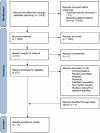Percutaneous Versus Surgical Femoral Cannulation in Minimally Invasive Cardiac Surgery: A Systematic Review and Meta-Analysis
- PMID: 38604983
- PMCID: PMC11385621
- DOI: 10.1177/15569845241241534
Percutaneous Versus Surgical Femoral Cannulation in Minimally Invasive Cardiac Surgery: A Systematic Review and Meta-Analysis
Abstract
Objective: Minimally invasive cardiac surgery (MICS) is increasing worldwide. In most cases, the surgical technique includes cannulation of the groin for the establishment of cardiopulmonary bypass, requiring a second surgical incision (SC) for exposure and cannulation of the femoral vessels. With the introduction of arterial closure devices, percutaneous cannulation (PC) of the groin has become a possible alternative. We performed a meta-analysis and systematic review to compare clinical endpoints between the patients who underwent PC and SC for MICS.
Methods: Three databases were assessed. The primary outcome was any access site complication. Secondary outcomes were perioperative mortality, any wound complication, any vascular complication, lymphatic complications, femoral/iliac stenosis, stroke, procedural duration, and hospital length of stay (LOS). A random effects model was performed.
Results: A total of 5 studies with 2,038 patients were included. When compared with PC, patients who underwent SC showed a higher incidence of any access site complication (odds ratio [OR] = 3.09, 95% confidence interval [CI]: 1.87 to 5.10, P < 0.01), any wound complication (OR = 10.10, 95% CI: 3.31 to 30.85, P < 0.01), lymphatic complication (OR = 9.37, 95% CI: 2.15 to 40.81, P < 0.01), and longer procedural duration (standardized mean difference = 0.31, 95% CI: 0.12 to 0.51, P < 0.01). There was no significant difference between the 2 groups regarding perioperative mortality, any vascular complication, femoral/iliac stenosis, stroke, or hospital LOS.
Conclusions: The analysis suggests that surgical groin cannulation in MICS is associated with a higher incidence of any access site complication (especially wound complication and lymphatic fistula) and with a longer procedural time compared with PC. There was no difference in perioperative mortality.
Keywords: femoral cannulation; minimally invasive cardiac surgery; percutaneous cannulation.
Conflict of interest statement
Declaration of Conflicting InterestsThe authors declared no potential conflicts of interest with respect to the research, authorship, and/or publication of this article.
Figures






References
-
- Moschovas A, Amorim PA, Nold M, et al.. Percutaneous cannulation for cardiopulmonary bypass in minimally invasive surgery is associated with reduced groin complications. Interact Cardiovasc Thorac Surg 2017; 25: 377–383. - PubMed
-
- Sugimura Y, Jandali H, Immohr MB, et al.. Percutaneous cannulation of femoral vessels in minimally invasive cardiac surgery. Thorac Cardiovasc Surg 2023; 71: 641–647. - PubMed
-
- El-Sayed Ahmad A, Bayram A, Salamate S, et al.. Percutaneous versus surgical femoral access in minimally invasive cardiac operations. Eur J Cardiothorac Surg 2022; 61: 1348–1354. - PubMed
Publication types
MeSH terms
LinkOut - more resources
Full Text Sources
Medical

